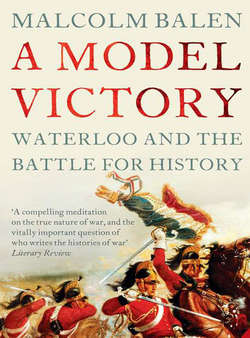A Model Victory

Реклама. ООО «ЛитРес», ИНН: 7719571260.
Отрывок из книги
Waterloo and the Battle for History
The Duke of Wellington, 24 September 1842
.....
A professor of military surgery, John Thomson, saw one patient whose neck had been cut by a sabre, revealing part of the brain which was seen pulsating for eight weeks. There were many victims with sabre wounds to the face and neck, where the eyelids, nose, ears, cheeks and lips had been divided, wounds which were held together by adhesive straps, and by bandages. In many cases, bullets had passed directly through one or both eyeballs. There were many chest wounds, too, some inflicted by the lance and bayonet; but most by musketballs. There were patients whose bladders had been penetrated by musketballs, and, in several cases, men had lost large portions of the buttocks and thighs to cannonballs.
More than five hundred amputations were carried out by the surgeons in an age without anaesthetics, their most famous patient Lord Uxbridge, whose knee had been shattered. He talked calmly to his surgeons as they cut through his flesh and bone, in a house a few miles from the battlefield, and he was heard only once to complain, when he remarked that the knife did not seem very sharp. ‘Take a look at that leg,’ he commanded his visitor, Sir Hussey Vivian, pointing to the severed limb which was still in the room. He regretted its loss deeply. ‘Some time hence, I may be inclined to imagine it might have been saved.’
.....